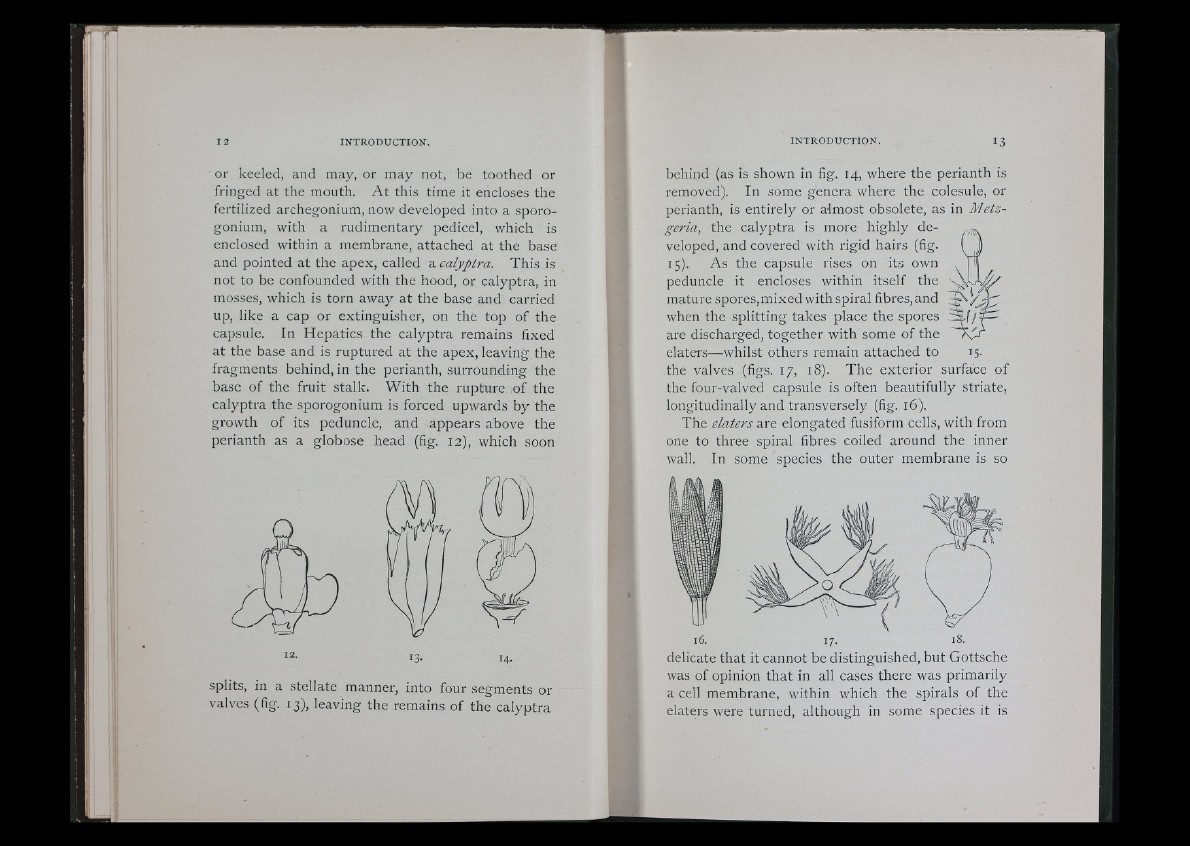
or keeled, and may, or may not, be toothed or
fringed at the mouth. A t this time it encloses the
fertilized archegonium, now developed into a sporo-
gonium, with a rudimentary pedicel, which is
enclosed within a membrane, attached at the base
and pointed at the apex, called a calyptra. This is
not to be confounded with the hood, or calyptra, in
mosses, which is torn away at the base and carried
up, like a cap or extinguisher, on the top of the
capsule. In Hepatics the calyptra remains fixed
at the base and is ruptured at the apex, leaving the
fragments behind, in the perianth, surrounding the
base of the fruit stalk. With the rupture of the
calyptra the sporogonium is forced upwards by the
growth of its peduncle, and appears above the
perianth as a globose head (fig. 12), which soon
splits, in a stellate manner, into four segments or
valves (fig. 13), leaving the remains of the calyptra
behind (as is shown in fig. 14, where the perianth is
removed). In some genera where the colesule, or
perianth, is entirely or almost obsolete, as in Metz-
geria, the calyptra is more highly developed,
and covered with rigid hairs (fig.
15). As the capsule rises on its own
peduncle it encloses within itself the
mature spores, mixed with spiral fibres, and
when the splitting takes place the spores
are discharged, together with some of the
elaters—-whilst others remain attached to 15.
the valves (figs. 17, 18). The exterior surface of
the four-valved capsule is often beautifully striate,
longitudinally and transversely (fig. 16).
The elaters are elongated fusiform cells, with from
one to three spiral fibres coiled around the inner
wall. In some species the outer membrane is so
delicate that it cannot be distinguished, but Gottsche
was of opinion that in all cases there was primarily
a cell membrane, within which the spirals of the
elaters were turned, although in some species it is